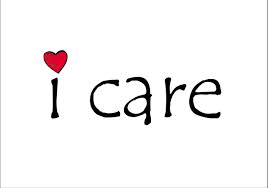Now that the Sustainable Development Goals have
been signed and sealed, it is time for the private sector to deliver. For many
businesses it is a difficult task, in large part because the objectives may
seem abstract. Supporting a goal to end poverty in all its forms everywhere or
to achieve gender equality and empower all women and girls can come off more as
moral aspirations than measurable deliverables.
Fortunately, a host of resources exist to help
businesses deal with this issue. Civil society and the private sector have
collaborated on various fronts to create practical tools and guidelines that
assist businesses in sorting out how to put the SDGs into action.
While they vary in their approach, they all aim to
guide an organization through the process of assessing its priorities;
identifying which SDGs match its objectives; aligning its core strategy to
those SDGs; and providing concrete examples of businesses who are moving along
in the process.
Here are a few of the resources that are available
to businesses:
SDG Compass
Who’s behind it: A collaboration between the United Nations Global Compact,
international sustainability consultancy GRI and the World Business Council for
Sustainable Development.
What it involves: The SDG
Compass provides guidance for companies on how they can align
their strategies as well as measure and manage their contribution to achieving
the SDGs.
The guide presents five steps that assist companies
in maximizing their contribution to the SDGs – understanding the SDGs, defining
priorities, setting goals, integrating sustainability into the core business
and reporting and communicating information.
The SDG Compass functions as a user guide that is
intended to lead an organization through a self-assessment process by asking
evaluative questions and focusing on systems and processes it has in place. The
SDG Compass is developed with a focus on large multinational companies.
However, small and medium-size enterprises are also encouraged to use it as a
source of inspiration and adapt as necessary. It is also designed for use at
the entity level, but may be applied at product, site, divisional or regional
level as required.
SDG Industry
Matrix
Who’s behind it: A joint initiative between the U.N. Global Compact and
international consultancy KPMG
What it involves: The SDG Industry Matrix, also created as part of a
U.N. Global Compact partnership is a resource that is designed to inform by
example. The project will showcase brief industry-specific examples and ideas
for corporate action that are related to each of the SDGs. The findings will be
presented in a series of publications that will highlight bold pursuits and
decisions made by a diversity of companies for every SDG.
The publications, “or matrices” that demonstrate
the confluence between business and the SDGs, are clustered around the
following industries: transportation; financial services; industrial
manufacturing; healthcare and life sciences; food, beverage and consumer goods;
energy, natural resources and chemicals; and infrastructure. For every matrix,
KPMG will convene a roundtable discussion with issue area experts and industry
associations to review the content, agree on the most compelling opportunities
for shared value, identify the most pertinent examples and ultimately present
the publications. The roundtable dialogues are being held various international
locations through December.
The Poverty
Footprint
Who’s behind it: A collaboration between the U.N. Global Compact and international
advocacy group Oxfam.
What it involves: The Poverty Footprint is an assessment tool that
enables companies and civil society partners to understand corporate impacts on
multidimensional poverty.
As a tool to help implement the SDGs, the Poverty
Footprint provides a comprehensive overview of the factors that influence
poverty. It emphasizes stakeholder engagement and partnership between companies
and civil society as a means for establishing pro-poor business strategies.
The Poverty Footprint describes itself as a
“research partnership” that goes beyond tools that assess risk of negative
impact by also identifying business strategies that deliver a fairer share of
value for people living in poverty.
Similar to the SDG Compass, the Poverty Footprint
provides an impact assessment of where a company and its value chain are
functioning to alleviate poverty and where its actions are exacerbating
poverty. It provides data that enables an organization to manage the positive
and negative impacts of its value chain more effectively and to find opportunities
to advance pro-poor business strategies.
It also gives companies a tool for producing a
public report to share its findings and identify next steps for commitments and
provides recommendations that shape a plan of action.
Business for
2030
Who’s behind it: An initiative of the U.S. Council for International Business
What it involves: Business
for 2030 is a visually-driven, interactive site that provides
private sector actors with a useful understanding of companies who are adopting
strategies that align with the SDGs.
Similar to the SDG Industry Matrix, Business for
2030 informs through examples. The site showcases past and continuing business
contributions to sustainable development through the prism of the SDGs.
The site is structured as a three-tiered approach.
First, by providing a comprehensive explanation of the SDGs and making the
business case for achieving them. Second, by providing examples of businesses
that are currently working towards each of the 169 individual indicators for
the 17 total goals. And third, through an open-source invitation that gives
businesses the opportunity to submit their contributions and efforts to be
showcased on the site.
Business
Charter for Sustainable Development
Who’s behind it: A project by the International Chamber of Commerce.
What it involves: The Business Charter for Sustainable Development has
been specifically designed to help companies contribute to the SDG
implementation by providing a practical framework that includes tools for
businesses of all sectors and geographies to help shape their own
sustainability strategy.
Less self-assessing than the SDG Compass and the
Poverty Footprint and without the case study examples of Business for 2030 and
the SDG Industry Matrix, the Business Charter for Sustainable Development is
unique as being a practical resource for any and all businesses. It is intended
to be relevant for small and medium-sized companies and businesses in emerging
markets as a common and accessible starting point for aligning with the SDGs.
It is organized by identifying eight principles for
sustainable development and the underlying indicators in support of each one.
For each principle, the charter offers concrete recommendations of
intra-industry and collaborative actions that could be taken to meet those
principles. And importantly, it links those courses of actions to an individual
SDG, providing a tactical guide for how any business can work towards
fulfilling a global goal.



Comments
Post a Comment